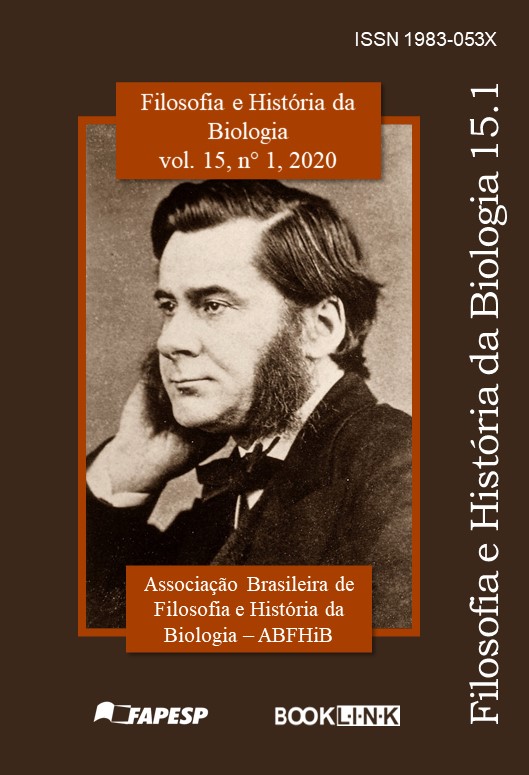The problem of the representation of nature: natural entities within models of experimentation
DOI:
https://doi.org/10.11606/issn.2178-6224v15i1p79-91Keywords:
Representation of nature, Experimentation-laboratories, Natural entities, Chain representation modelsAbstract
Laboratory experimentation systems involve standardized natural entities alluding to their high transformation in successive purification and selection processes (Kohler (1994). Karin Knoor Cetina (1999) refers to singular homogeneous entities, coming to constitute in some different of those natural entities. Márquez describes this as a process of abstraction. She claims that to choose characteristics reduces the complexity and thus, idealized representations that correspond to selected and abstracted characters of the individual as such. They are standardized forms of living entities that have an inferential function: from the data obtained in the standardized individual under laboratory conditions to the organisms that are “outside the laboratory”, deriving data that appear in the inferences. Concerning the experimentation and representation of nature, Hans-Jorg Rheinberger (1997) considers that one model succeeds another, in a chain that never refers to a natural reality as such. This article exposes the problem that exists in the representation of nature that science claims. It concludes that the inferences derived from the theories about reality would be restricted by a representation model that is part of another model within the laboratory. In this sense, they would not account for a natural reality as a reference.
References
BIER, Ethan; MCGINNIS, William. Model organisms in the study of development and disease. Pp: 25-45, in: EPSTEIN, Charles J.; ERICKSON, Robert P.; WYNSHAW-BORIS, Anthony Joseph (eds.). Molecular basis of inborn errors of development. Oxford: Oxford University Press. 2003.
CREAGER, Angela N. H. The life of a virus: Tobacco mosaic virus as an experimental model, 1930-1965. Chicago: The University of Chicago Press. 2002.
FUJIMURA, Joan. Crafting science: a sociohistory of the quest for the genetics of cancer. Cambridge, MA: Harvard University Press. 1996.
KELLER, Evelyn Fox. Making sense of life: explaining biological develop-ment with models, metaphors and machines. Cambridge, MA.: Harvard University Press. 2002.
KNORR CETINA, Karin. Epistemic cultures: How the sciences make knowledge. Cambridge: Harvard University Press. 1999.
KOHLER, Robert E. Lords of the Fly: Drosophila genetics and the experi-mental life. Chicago: The University of Chicago Press. 1994
LEONELLI, Sabina. Weed for thought: using Arabidopsis thaliana to un-derstand plant biology. Amsterdam, 2007. Tesis doctoral. Vrije Uni-versiteit.
MÁRQUEZ, Monica. Idealization and model organisms. Memories of the Meeting of the International Society for the History, Philosophy and So-cial Studies of Biology. Exeter: ISHPSSB. July 25-29, 2007.
RHEINBERGER, Hans-Jorg. Toward a history of epistemic things. Red-wood City: Stanford University Press. 1997.
Downloads
Published
Issue
Section
License
Copyright (c) 2020 Filosofia e História da Biologia

This work is licensed under a Creative Commons Attribution-NonCommercial-ShareAlike 4.0 International License.
The published manuscripts become the property of the journal Philosophy and History of Biology, and the authors accept the terms of this license and agree to assign the copyright for publication, in addition to agreeing with the publication's commitment to offering open access to all of its content. The information and concepts issued in signed papers are the sole responsibility of their authors.


 cademia.edu
cademia.edu
